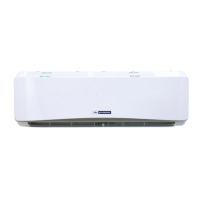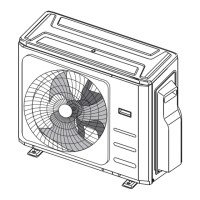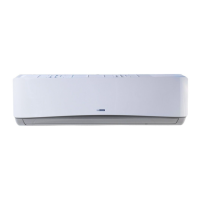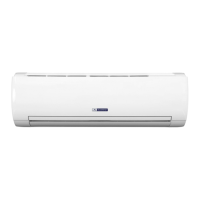Do you have a question about the Blueridge BA13 and is the answer not in the manual?
Procedures for checking the unit for damage upon receipt from the carrier.
Essential safety measures and personal protective equipment required during installation.
Guidelines for selecting the proper location and installing a solid, level mounting pad for the outdoor unit.
Specific clearance dimensions needed around the unit for proper airflow and service access.
Specific considerations for installing the unit on a rooftop, including elevation and wind barriers.
Information on correct refrigerant line sizes and avoiding damage like kinking.
Importance and procedure for installing the filter drier for system reliability.
Guidelines for properly routing and securing refrigerant lines to prevent vibration and noise.
Steps to convert an R-22 system, including removing the fixed orifice.
Procedure for removing an existing expansion valve when converting to R-410A.
Procedure for flushing existing line sets to remove contaminants before R-410A conversion.
Detailed steps for installing the expansion valve unit at the indoor coil.
Correct placement of the sensing bulb and connection of the equalizer line.
Includes cutting, deburring, cap/core removal, and manifold gauge setup for brazing.
Ensuring proper nitrogen flow during brazing and the steps for making the braze joint.
Using water-saturated cloths to protect service valve seals and paint.
Cooling the braze joint and preparing for leak testing and evacuation.
Connecting the manifold gauge set to the system for leak testing.
Steps to pressurize with refrigerant and nitrogen, then detect leaks.
Setting up the manifold gauge set and vacuum pump for system evacuation.
Using a vacuum pump to remove air and moisture to achieve a deep vacuum.
How to access the Schrader valve for gauge connection and testing.
Steps to open and close liquid and suction line service valves correctly.
Instructions for connecting the main power supply to the unit.
Details on connecting thermostat and control wiring to the unit.
Checks like fan rotation, wiring, voltage, and thermostat settings before initial startup.
Methods and precautions for charging the system with the correct amount of refrigerant.
Routine inspections and checks performed by a qualified service technician.
Instructions for cleaning condenser coils and maintaining painted surfaces.
Explanation of thermostat settings and fan modes for optimal comfort and humidity control.
Steps homeowners can take to diagnose issues before calling a service technician.
| Brand | Blueridge |
|---|---|
| Model | BA13 |
| Category | Air Conditioner |
| Language | English |




